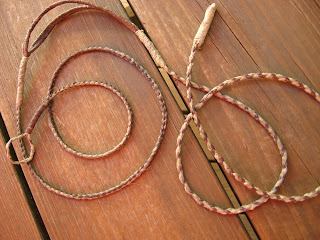Wednesday, May 20, 2009
Monday, May 18, 2009
clay ammo
start by digging you up some clay. here in georgia you need only go down a couple inches to get to some good stuff.
i tried using water to change the consistency myself but found it much easier to just wait for some rain. natural rainfall brings out a really good consistency.
i spread some of the clay out on a tray and sift out the fine rocks with my left hand while the clay drops below onto my right hand, and ill keep squeezing it packed until its a bit bigger than desired size.
youll notice if you keep packing it for a while it gets smaller, i try to make them dense as possible.
you could do an oval or any shape size you prefer.
you can pack the halves back together by hand and it will work fine, it just wont be as smooth and uniform looking.
these are close to golf ball size, 80 grams wet, dried to a solid 65 grams in 1-2 days. sunlight isnt necessary to dry them as i would have thought, even on a rainy day, they are quick to dry either way.
baking the clay at high temperatures ive heard will increase it's resistence to moisture damage, this was probably more necessary in ancient times but might be more effort than its worth for casual plinking ammo.
donegal tweed sling
Friday, May 8, 2009
a bramble fiber sling
the fibers from blackberry bushes can be made into a very strong cord suitable for sling making.
 Put 2 strips of fiber on top of each other and make their lengths slightly uneven by a few inches.
Put 2 strips of fiber on top of each other and make their lengths slightly uneven by a few inches.
 when your within a few inches of running out of cord, simply set in another strand and continue to twist it in.
when your within a few inches of running out of cord, simply set in another strand and continue to twist it in.
Use the spine of your knife, or the blade at a light angle to remove the thorns and branches. if you want finer strips of fiber, wear down the outer layer more.
take the center and begin twisting clockwise (away from you) with right hand , while twisting towards you with left hand until a kink forms and the cords cross
continue twisting the right strand clockwise until tight for about 1/2" then cross it over the top to the left side , making the left side strand now on the right- then you just keep repeating the process
you can change the thickness of the cord at any time by adding or removing fibers.
it could easily be made half as thick for braiding
Subscribe to:
Posts (Atom)



